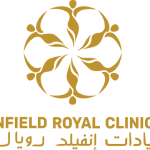Introduction to Breast Augmentation
Breast Augmentation Surgery, also known as augmentation mammoplasty, is a cosmetic surgery procedure aimed at increasing the size, shape, and fullness of the breasts. It is one of the most commonly performed cosmetic surgeries globally, with thousands of women opting for this procedure each year.
History of Breast Augmentation Surgery
The history of breast augmentation dates back to the late 19th century when surgeons experimented with various techniques to enhance breast size. However, modern breast augmentation as we know it today began in the 1960s with the introduction of silicone implants.
Types of Breast Implants
There are several types of breast implants available, including saline implants, silicone implants, and gummy bear implants. Each type has its unique characteristics and advantages, allowing patients to choose the most suitable option based on their preferences and goals.
Saline Implants
Saline implants are filled with sterile salt water after placement, providing a natural feel and adjustable volume. They are a popular choice for women looking for a customizable implant size.
Silicone Implants
Silicone implants are filled with silicone gel, mimicking the natural feel of breast tissue. They come in various shapes and textures, offering a more natural look and feel compared to saline implants.
Gummy Bear Implants
Gummy bear implants, also known as cohesive gel implants, are filled with a highly cohesive silicone gel that maintains its shape even if the implant shell is damaged. They provide a firmer and more structured appearance to the breasts.
Preparing for Breast Augmentation Surgery
Before undergoing breast augmentation surgery, patients need to consult with a board-certified plastic surgeon to discuss their goals, medical history, and implant options. The surgeon will assess the patient's breast anatomy and recommend the appropriate implant size and shape for optimal results.
Consultation with a Plastic Surgeon
During the consultation, the surgeon will explain the breast augmentation procedure, potential risks, and expected outcomes. Patients are encouraged to ask questions and express any concerns they may have.
Choosing the Right Implant Size and Shape
The surgeon and patient work together to choose the right implant size and shape based on the patient's body type, lifestyle, and aesthetic preferences. Sample implants may be used to help visualize the potential results.
Pre-Operative Instructions
Before surgery, patients are given pre-operative instructions, which may include avoiding certain medications, quitting smoking, and arranging for transportation to and from the surgical facility.
The Breast Augmentation Procedure
Breast augmentation surgery is typically performed under general anesthesia and involves several key steps, including incision placement, implant insertion, and wound closure.
Anesthesia Options
The surgeon will discuss anesthesia options with the patient, which may include general anesthesia or intravenous sedation. The chosen anesthesia method ensures a comfortable and pain-free experience during the procedure.
Incision Placement
There are different incision options for breast augmentation, including inframammary (under the breast fold), periareolar (around the nipple), and transaxillary (in the armpit). The surgeon selects the most appropriate incision based on the patient's anatomy and implant placement.
Implant Placement Techniques
Breast implants can be placed either submuscularly (under the chest muscle) or subglandularly (above the chest muscle). The surgeon determines the optimal placement technique to achieve natural-looking results and minimize potential complications.
Recovery and Post-Operative Care
After breast augmentation surgery, patients enter a recovery period during which they need to follow post-operative instructions for optimal healing and results.
Immediate Recovery Period
Patients may experience some discomfort, swelling, and bruising immediately after surgery, which can be managed with pain medication and proper rest. It's essential to follow the surgeon's guidelines for activity restrictions and wound care during this time.
Follow-Up Appointments
Patients have follow-up appointments with their surgeon to monitor healing progress, remove stitches if necessary, and address any concerns or questions. Regular check-ups are crucial for ensuring the long-term success of breast augmentation.
Long-Term Care Tips
Maintaining long-term breast health and implant integrity requires ongoing care, including regular self-exams, mammograms as recommended by healthcare providers, and periodic check-ups with the plastic surgeon.
Benefits of Breast Augmentation
Breast augmentation offers numerous benefits beyond aesthetic enhancement, positively impacting patients' lives in various ways.
Improved Self-Esteem and Confidence
Many patients report a significant boost in self-esteem and body confidence after breast augmentation, feeling more comfortable and satisfied with their appearance.
Enhanced Body Proportions
Breast augmentation can improve overall body proportions, creating a more balanced and harmonious silhouette that aligns with the patient's desired aesthetic goals.
Clothing Fit and Style Choices
With increased breast volume and shape, patients can enjoy a wider range of clothing options and styles, enhancing their fashion choices and self-expression.
Risks and Considerations
While breast augmentation is generally safe and effective, patients need to be aware of potential risks and considerations associated with the procedure.
Potential Complications
Complications such as infection, implant rupture, capsular contracture, and changes in nipple sensation are possible but rare. Patients should follow post-operative care instructions diligently to minimize these risks.
Long-Term Maintenance
Breast Augmentation Surgery in Riyadh as implants are not permanent and may require replacement or revision surgery over time due to normal wear and tear or changes in the patient's aesthetic preferences.






Comments